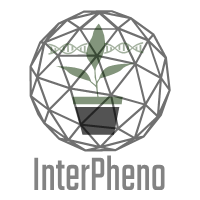Molecular biology techniques together with ?omics? approaches have deeply accelerated plant breeding, providing better plant cultivars at an increased pace. Regrettably, advances in genomics far by-passed the advances in phenomics. As a result there is a rising consensus among biologists that plant phenotyping – the systematic quantitative measurement of plant traits – is a bottleneck to advancing both fundamental research and plant breeding.
Several international initiatives in high-throughput plant phenotyping (HTPP) are at course. Plant phenotyping is an emerging science that combines multiple methodologies and protocols to measure plant growth, architecture, and composition at different scales of organization. Phenotyping has an intrinsic interdisciplinary character and in this project a team of agronomists, biologists, physicists, informaticians and engineers are committed to develop a prototype of a semi-automated HTPP platform at an affordable cost, incorporating machine learning techniques to process imaging and spectroscopic data. Two biological models will be used Vitis sp. and Arabidopsis thaliana. In Vitis we will study the resistance to fungal infection, and assess how to automatically screen resistant/susceptible individuals/cultivars based on imaging and spectroscopic data coupled to artificial intelligence techniques. The choice of this problem as a proof of concept is justified by the economic importance of vineyards. Resistance to fungal infections is major issue for grape producers and wine industry. In the case of Arabidopsis we will use the available diversity of genotypes to test the ability of automatically classify their response to drought stress. Arabidopsis is a model plant in plant biology, as it grows fast, in little space and a vast collection of genotypes is available. Furthermore, its rosette habit decreases structural complexity and facilitates automated phenotyping. The problem addressed:resilience to drought stress ? will make use of the diversity of genotypes available and is of great importance in face of the ongoing climate changes. The project will proceed in 3 phases and comprises 7 main tasks. In phase 1 different optical sensors and different machine learning algorithms will be tested in Vitis sp. and Arabidopsis plants. The most efficient and cost effective will be selected. The possibility of extending their application to satellite analysis will be evaluated. In phase 2, based on results of phase 1, we will design, built and test a simplified prototype of a semiautomated HTTP platform. This prototype will do only bidimensional image analysis and will be tested on Arabidopsis.
In phase 3 the platform will be upgraded to include tridimensional image analysis and will be tested on Vitis sp.. This novel prototype will help breeding of improved agricultural species and foster national investigation in the domains fundamental plant biology, crop phenotyping, image analysis and processing software.
